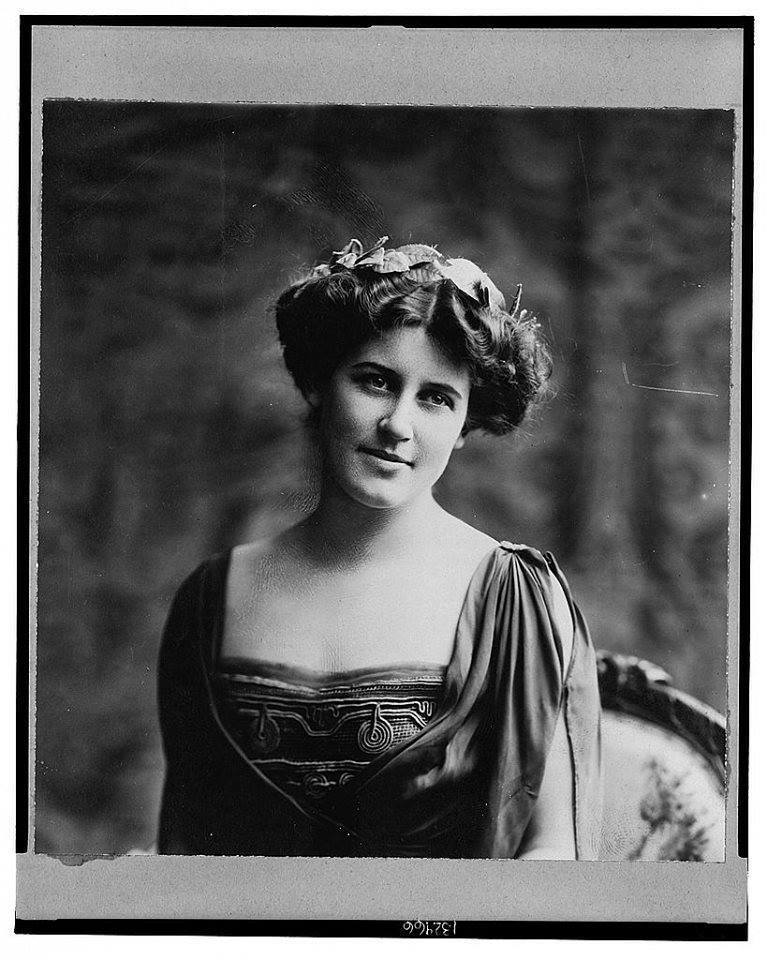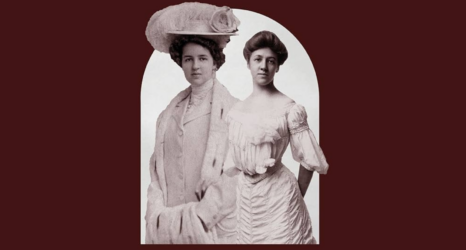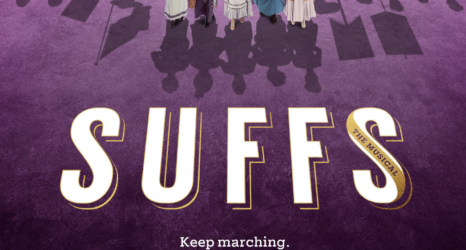March 11, 1912: Though there are many popular themes for suffrage meetings and speeches, tonight’s choice to challenge 25 objections to women having the vote has outdone all of them in terms of drawing a crowd.
Less than half of those who wanted to attend were able to pack themselves into Manhattan’s spacious Metropolitan Temple, but the crowd out on Seventh Avenue was assured that remarks made at the meeting would be repeated at an overflow gathering. The attendance apparently surprised the police, who initially sent just one officer, assigned to enforce the fire codes limiting the number of audience members.
Mary Jenney Howe presided at the meeting, using a large gavel to maintain order. She was ably assisted by a young woman who employed a cow bell to strictly enforce the five-minute limit on speakers—a necessity caused by the large number of myths that needed to be refuted.
The evening’s principal orators were well known to the public and equally well prepared to defend our cause. They included labor lawyer Inez Milholland; author and Broadway performer Fola LaFollette, daughter of Senator “Fighting Bob” LaFollette, Republican of Wisconsin and attorney Belle Case LaFollette; writer and editor Charlotte Perkins Gilman, and English suffragist Elizabeth Freeman. It was Freeman who generated the most controversy by defending her fellow British militants:

“Militancy hurts the cause does it ? No, I don’t think it does. You have only to read the history of the United States to get the answer to this question. You read in the newspapers of the destruction of property in London. In Boston they destroyed the tea. In London we broke windows.”
Freeman then reminded her listeners of the violence and brutality inflicted on the militants by the British government through the police and explained that the reason they don’t simply work to replace the men who run the government is because their goal is to change the system itself.
To the charge that “women don’t understand politics,” Frederic Howe asked how they could, having never been given the chance to participate in it:
“Most men can’t cook, either, for the very sufficient reason that they’ve never had the chance to learn how to do it.”
Hutchins Hopgood addressed the charge that voting would make women less attractive by saying that just the opposite was the case, as women would become even more interesting and “will gain richer and deeper charms.”
The myth that “a woman’s place is in the home” was particularly offensive to Inez Milholland:
“If her place is in the home, why is it that 9,000,000 women are now out of the home and at work in the mills, factories and workshops of the land? What are you going to do about these women if this objection is right? Are you going to pension them so they can stay home, or are you going to let them starve?”
Milholland was just getting into full stride when the cow bell sounded, causing her to comment: “I haven’t begun to talk on this subject yet …” as she went back to her seat.
Inez Haynes Gilmore was quite skeptical of the old “ballots and bullets” argument. She noted that there is no military service or even military fitness requirement for male voters, and that substantial numbers of men who fought in the Civil War were denied the vote at the time because they were under 21. She then recalled fighting women like Joan of Arc and Molly Pitcher.
She pledged that: “If it is necessary for us to fight in order to vote, why then, we shall fight,” but added that “when women get the ballot, war will be as extinct as the dodo.”
Would enfranchised women take offices away from men? Only if the women candidates were more competent, said Fola LaFollette. And since “municipal government, after all, is only municipal housekeeping,” women sweeping some politicians out of office would be a good thing.
Bertha Rembaugh, one of the final speakers, gave a whimsical reassurance to the males in the audience when she promised that if women got the vote they would not try to “make men good” in “too great a hurry.”
Armed with over two hours of facts and logical responses to the most common arguments against woman suffrage, the audience members can now go forth as well-trained “Votes for Women” advocates to lobby their family members, co-workers, friends, and neighbors, whose support will be critical when the men of New York State eventually vote on woman suffrage.





